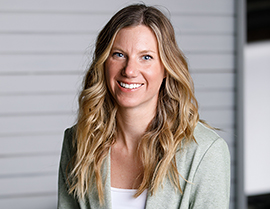KOTTKE END OF SEASON AND DEMOGRAPHIC REPORT: BEHIND THE NUMBERS
By Rick Kahl
NSAA’s Kottke/Demographic Report, released in late summer, quantified an historic year for the industry. Record visits of 65.4 million; a record 11.6 million participants; a return of lapsed participants (who comprised 35 percent of all visitors); near-record midweek visits (48 percent of total). Season pass sales and visits were both at record levels, with passholders accounting for 50 percent of all visits.
Could all this signal a new normal in the post-pandemic era?
Maybe. Before we get too euphoric, though, note that growth was largely concentrated from the West Coast through the Rockies, and that 85 percent of the increase from 2021-22 occurred in the Rockies and the Pacific Southwest, where epic snowfall provided long seasons and drew out crowds.
The report also reveals some long-term trends that could eventually curb visits, even if the short-term momentum from last winter remains strong. Among them a ski/ride population that is aging fast, and limited, increasingly, to wealthy folks. Along with those trends, there are fewer newcomers taking lessons, and participants under the age of 25 continue to shrink as a percentage of the overall ski/ride population.
To explore the good news/bad news aspects of the report, SAM talked with four industry leaders from across the country. Their views on a variety of Kottke-related topics follow.
 Clockwise: SAM’s Rick Kahl and Olivia Rowan sit down with Greg Pack, Charles Skinner Jr., Dennis Eshbaugh, and Patrick Torsell to discuss NSAA’s latest Kottke/Demographic Report.
Clockwise: SAM’s Rick Kahl and Olivia Rowan sit down with Greg Pack, Charles Skinner Jr., Dennis Eshbaugh, and Patrick Torsell to discuss NSAA’s latest Kottke/Demographic Report.
The Good and Bad of Pass Products
Patrick Torsell, resort operations director, Ski Cooper, Colo.: For the core skier, skiing has never been cheaper. It’s also great for operators to have that chunk of revenue guaranteed upfront in advance. For those of us who don’t do a lot of summer ops, having the cash flow during that time of year is really important.
But there’s a huge segment of the skiing population or potential skiing population that is kind of priced out and may lose interest as a result of that. If you can’t go up to a ticket window and get a reasonably priced ticket, whatever that means in your market, we’re pushing away first-timers from even wanting to try the sport.
Greg Pack, GM, Mt. Hood Meadows/Cooper Spur, Ore.: For season pass visitors, the cost is pushing people into some value products [night and weekday passes]. But as long as resorts are providing those kinds of opportunities, that’s fine. We’re up a few thousand pass sales just on value passes alone this year.
Charles Skinner Jr., owner, Lutsen Mountains, Minn., Granite Peak, Wis., and Snowriver, Mich.: There’s a lot of people in our part of the country that only ski a few times a year, so a season pass just doesn’t fit them. Most of our revenue, 80 to 90 percent depending on the ski area, comes from day tickets.
Do We Have a New Normal?
Pack: Yes. People have time during the day because of their work flexibility and working from home. They can knock out projects late at night, or ski for a little bit and go to their car to hit a Zoom call. They’re working their recreation around their job. It’s a big trend for us, for sure.
Torsell: I don’t think you can really take one or two years and say we have a real trend yet. I think the snowfall played a big role in that. Someone who maybe hasn’t skied in four or five years, we have the big snow year, they want to get the skis out again.
Losing the Younger Audience
Torsell: The birth rate in the United States in 2007 was 2.12 [per woman of child-bearing age] and it was 1.64 in 2020. This literally means there are fewer children that we can even attempt to bring into the sport. Having those data points is important to keep in mind.
Dennis Eshbaugh, president and GM, Holiday Valley, N.Y.: Also, I think this is the year that the under-18 population in America is becoming more people of color versus white. So, I think we have to find maybe a better way to reach people of color than we have.
Skinner Jr.: If our goal is to have skiing grow again, or at least maintain its share of the overall population, the declining percentage of young participation is very worrisome. It means that we’re not engaging young families.
I don’t think it’s an issue of just price, but of our price structure, where you have $250 tickets on weekends, and yet you allow your season passes to come for $17—we could be better allocating the space on the weekends to encourage more people to come.
My goal personally would be for the ski industry to develop a plan to increase demand for our sport. We’re doing ourselves a disservice unless we can come up with an industry-wide funding mechanism to build demand.
Torsell: I wonder if the general population’s conception of skiing is very different now than it was a couple decades ago. Maybe the message isn’t right. There’s a perception of skiing now as kind of just another big corporate business like any other, rather than something really special and unique.
Have Small Areas Retained Any of the Covid Bump?
Skinner Jr.: What I’ve heard from a lot of them is that they feel they’ve benefitted by the pass structure and the high rates at some areas. So they get the people that are priced out of the season pass products and the high day ticket products. Frankly, we’ve benefited from that, too, because we keep our daily prices at kind of the same ratio that they’ve always been.
But I think there is going to be a falloff for these smaller areas where people just had nothing else to do during Covid.
Eshbaugh: I think there’s always going to be a place for the individual operator that knows how to multitask, do it all, and can kind of carve out a place where they’ll keep their visits. In the last 10 years, the yield at the small ski areas has gone up 116 percent, versus 66 percent for the extra-large.
But the raw cost to operate these businesses has gotten a lot worse.
Torsell: Utility costs and fuel costs and liability insurance costs. And credit card fees. If you’re operating a $1 million top line business, every one of those little things is really important. The cost of doing business is much higher now.
Skinner Jr.: It’s really infrastructure costs that have exploded. Small areas are priced out of infrastructure, even groomers and snowmaking equipment. It’s just very, very expensive.
On the Decline in Lessons
Eshbaugh: Midweek school programs have been a real Achilles heel for us—we’ve seen utilization drop. [Nationally in 2020-21] we dropped about 43 percent from 2018-19. And even though we’ve climbed up for the last couple years, we’re still almost 18 percent below where we were five years ago.
That’s a really bad thing, because we’ve always acknowledged as an industry that as we increase a person’s proficiency, they want to ski or snowboard more often.
Pack: We have an area of the mountain where we can do a much cheaper beginner progression ticket. We put together these trial programs with an instructor and make it really cheap for people to see if it’s something they want to do and commit a bunch of time to. Our ski school team came up with that concept and it worked really well.
The programs were so successful that on our last day of operation, when normally you have five or 10 in lessons, we had close to 60 people in lessons.
Will the Momentum Continue?
Pack: I think there’s enough engagement with what we’ve seen with our business. As long as it’s a good snow year, moderate snow year, I think we’ll do that.
Skinner Jr.: I think we’ll continue to grow at the slow rate that we’ve been growing. Some of our growth is because season passholder guests are skiing more. I see some of the growth that we’ve had as kind of illusory, in a sense, because we’re not really getting more margin out of that.
INDY XC PASS ON THE RISE
By Roger Lohr
Alpine ski areas get the bulk of Indy Pass headlines, but its cross-country component has been quietly gaining traction, with more than twice as many cross-country resorts on board this season vs. last and a revamped pass product.
More XC. The Indy XC Pass was introduced last year and provided two days of trail access at 20 cross-country ski areas. There are 43 areas on the pass for 2023-24, with a pass price of $99 adult (up from $69 last year) and $49 youth (12 and under). Regular Indy Pass holders (who have 180+ participating alpine resorts to choose from as well) can choose to add-on cross-country access—two days at each area—for $79 adult and $39 youth.
New XC ski areas this year include notables like Washington’s Methow Trails, Minocqua Winter Park, Wis., Ontario’s Hardwood Ski and Bike, and the Whistler Olympic Park. In the East, additions include Trapp Family Lodge in Vermont and Garnet Hill in New York. XC areas affiliated with alpine resorts include Howelsen Hill in Steamboat and Andes Tower Hills near Minneapolis.
Mostly crossovers. Last year, cross-country ski areas saw a total of about 1,200 Indy and Indy XC Pass redemptions, despite poor snow in some regions. The eight New England cross-country areas on the pass credited the rate of redemption partially to the high number of Indy Pass holders in the region. A rep from New Hampshire’s Jackson XC said the program was popular and brought “mostly new people” to the area. John Atkinson at Vermont’s Catamount Outdoor said the Indy program attracted “a high amount of new folks for the area, and many were alpine skiing crossovers.”
Same at cross-country areas directly linked to an Indy Pass alpine partner, such as Woodstock Nordic (with Saskadena Six), Vt., Waterville Valley, N.H., and 49 Degrees North, Wash., which saw a substantial amount of cross-over from alpine visitors who were taking advantage of the XC access. And while results in the West weren’t as prolific, staff at Bear Valley Adventure in California, for one, said that the program had started to exceed expectations despite much of the winter being impacted by heavy snow.
“The Indy Pass is the only pass in the country that is doing both alpine and Nordic skiing,” noted Indy Pass founder Doug Fish. Participating cross-country areas, said Fish, not only reported that the XC Pass attracted new visitors, but with them incremental income.
Deterring dabblers? What accounted for some of the Indy XC Pass’s success last year has changed, though. Last year, access to cross-country areas was included on the regular Indy Pass, providing an opportunity for alpine skiers and riders to dabble in the sport at no extra cost (aside from equipment rental, perhaps). The additional cost to include cross-country on a regular Indy Pass this year, albeit minimal, may put a dent in the number of would-be dabblers.
Despite that, the relationship Indy is fostering could be beneficial. About 11.6 million people in the U.S. alpine ski/snowboard vs. the 4 million who cross-country ski. Crossover between the two disciplines has been about 30-35 percent over the years.
Clearly there is an advantage to drawing crossovers when there are more participating XC ski areas in a region, when the area is in the vicinity of a population center, and when there is a direct affiliation with an Indy alpine partner. There are 10 XC areas hosting Indy Pass holders in British Columbia, so look to that region for trends at the season’s end.
SUPPLIER NEWS
 Jon WaltersLeitner-Poma of America has hired Jon Walters as business development and sales manager. Walters brings more than three decades of experience in sales and business development at various companies including The Sebastian Hotel in Vail, the Westin Snowmass, Crested Butte Mountain Resort, Vail Resorts, and Copper Mountain Resort.
Jon WaltersLeitner-Poma of America has hired Jon Walters as business development and sales manager. Walters brings more than three decades of experience in sales and business development at various companies including The Sebastian Hotel in Vail, the Westin Snowmass, Crested Butte Mountain Resort, Vail Resorts, and Copper Mountain Resort.
Ticketing platform Catalate has joined Spotlio. The integrated operations, which will be marketed under the consolidated banner of Spotlio, will provide digital solutions for the ski resort, parks, and attractions sector.
PEOPLE
 Katie Van RipperIn the West, Powder Mountain, Utah, hired Katie Van Riper as director of marketing; Justin Soine was named director of sports and recreation. … Brundage Mountain, Idaho, appointed Brandon Hammer as director of projects and Nick Toland has been promoted to director of base area operations.
Katie Van RipperIn the West, Powder Mountain, Utah, hired Katie Van Riper as director of marketing; Justin Soine was named director of sports and recreation. … Brundage Mountain, Idaho, appointed Brandon Hammer as director of projects and Nick Toland has been promoted to director of base area operations.
Alterra Mountain Company added to its executive leadership team, hiring Krista Sprenger as chief development officer, Gui Karyo as chief technology officer, and Andrew Bodziak as executive vice president, hospitality.
Vail Resorts promoted Jody Churich to the role of senior vice president and COO for the company’s West Region; Breckenridge Ski Resort, Colo., VP of mountain operations Jon Copeland was promoted to succeed Churich as Breckenridge COO. … Steamboat, Colo., hired Stephanie Gabriel as its new director of human resources.
In the East, Dempsey Mendrzycki was named general manager of Big SNOW American Dream in New Jersey. … Tenney Mountain, N.H., appointed Dan Egan as general manager. … Charles Blier was named as vice president of facilities for Camelback Resort, Pa.
 Ashley WaldenThe Olympic Regional Development Authority (ORDA) named Ashley Walden its new chief executive officer. … Ellen Wainwright is the new communications manager for Sunday River, Maine. ... Former Kirkwood, Calif., VP and GM Matt Jones was hired as president and COO of Stratton Mountain, Vt. ... Gene Syria has retired after 46 years working in operations at Killington Resort, Vt.
Ashley WaldenThe Olympic Regional Development Authority (ORDA) named Ashley Walden its new chief executive officer. … Ellen Wainwright is the new communications manager for Sunday River, Maine. ... Former Kirkwood, Calif., VP and GM Matt Jones was hired as president and COO of Stratton Mountain, Vt. ... Gene Syria has retired after 46 years working in operations at Killington Resort, Vt.
In the Midwest, Elm Creek Park and Hyland Hills, Minn., ski area specialist Tony Edmonds has retired after 23 years on the job.
AWARDS
The U.S. National Ski and Snowboard Hall of Fame named the class of 2023 inductees: Ross Anderson, Shannon Bahrke, Jeff Brushie, Billy Demong, Jake and Dave Moe, Les Otten, Mike Porter, and Hank Kashiwa.
The Hall of Fame also announced its 5th annual Women in Snowsports Industry Award recipient: Judy Gray, founder of Ski Dazzle events.
OBITUARIES
Todd Green, a ski industry veteran with more than 40 years of experience working at snowsports resorts and, most recently, as service manager for TechnoAlpin USA, died Sept. 23. Green’s career included stints at Copper Mountain, Colo., Squaw Valley (now Palisades Tahoe), Calif., and Vail Resorts. He had been with the TechnoAlpin team for nearly five years.
 Bruce WymanBruce Wyman died June 21 in Vermont. Wyman was an electrician by trade and spent most of his career in the ski industry. He had a long career at Mount Snow, Vt., and was active with the National Ski Areas Association. He also served nearly 23 years in the U.S. Military.
Bruce WymanBruce Wyman died June 21 in Vermont. Wyman was an electrician by trade and spent most of his career in the ski industry. He had a long career at Mount Snow, Vt., and was active with the National Ski Areas Association. He also served nearly 23 years in the U.S. Military.
Hans Geier, innovator and passionate ski industry leader, died Aug. 18. He spent most of his 30+-year career in the ski industry at various resorts including Steamboat, where he served as president and CEO, and Stratton Mountain, where he was president. He was also president of Doppelmayr North America from 1994-1997. He served on the boards of Colorado Ski Country USA and the National Ski Areas Association, and received NSAA’s Lifetime Achievement Award in 1998. In 2013, he was inducted into the U.S. National Ski and Snowboard Hall of Fame.
 Wayne RaglandLongtime SMI employee, Wayne Ragland, died on Aug. 18. Ragland had been with SMI for 32 years, working in sales and support before retiring in 2018 to spend time with family. Before joining SMI, he ran Park West Resort in Utah, which was later renamed Canyons and is now a part of Park City Resort.
Wayne RaglandLongtime SMI employee, Wayne Ragland, died on Aug. 18. Ragland had been with SMI for 32 years, working in sales and support before retiring in 2018 to spend time with family. Before joining SMI, he ran Park West Resort in Utah, which was later renamed Canyons and is now a part of Park City Resort.






